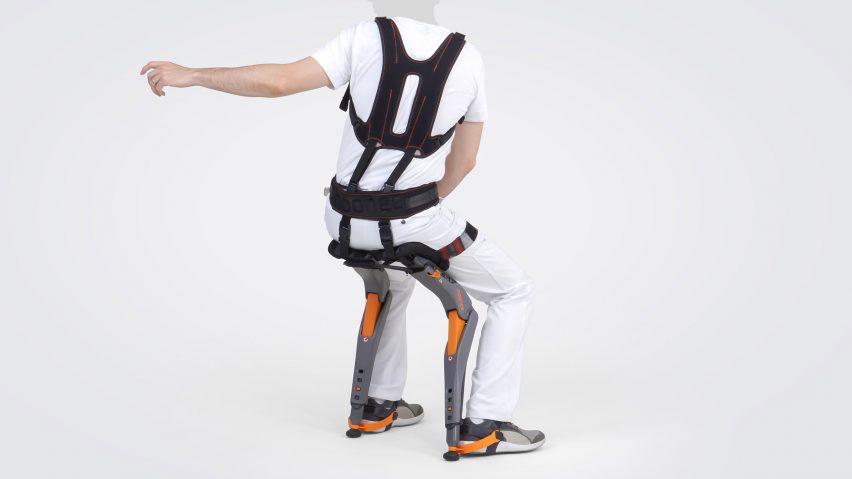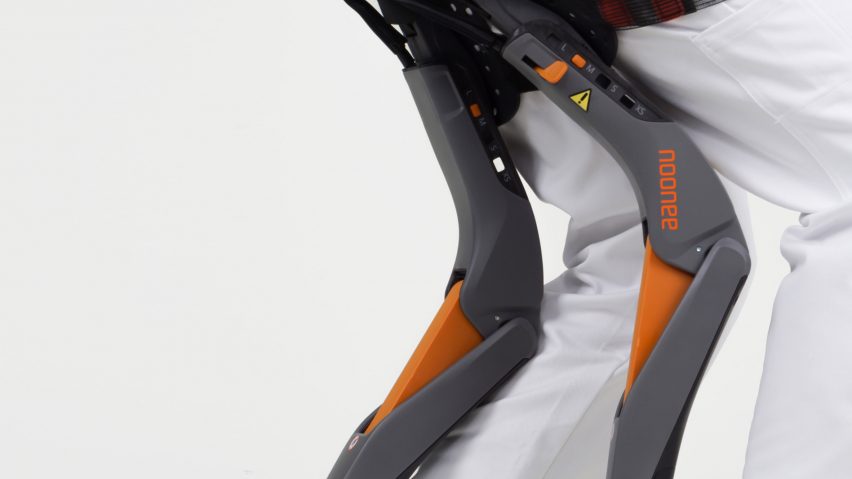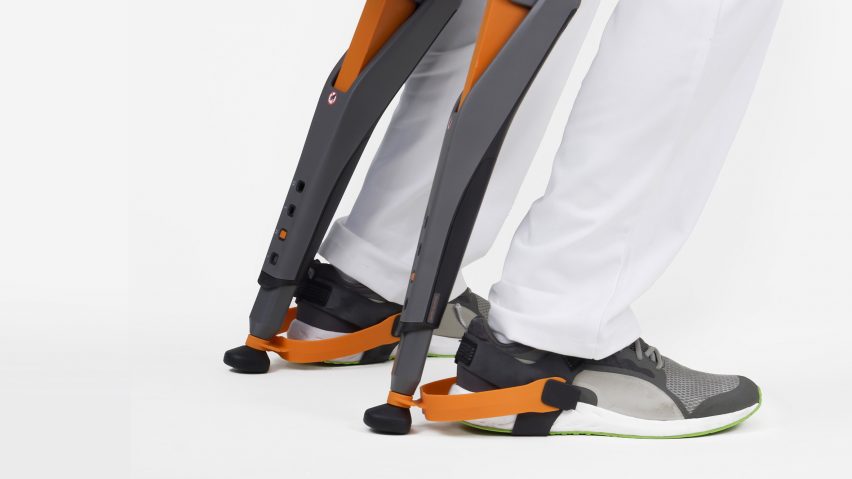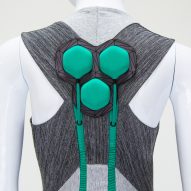| | Yehuda Lave, Spiritual Advisor and Counselor |
|
|
High-Priority Goals
Making and reaching high-priority goals creates a meaningful life. This is one of the most important concepts for anyone who truly wants to live a happy life. Certainly, gratitude is an important element in happiness. Kindness is another important element. But together with gratitude and kindness, a life devoted to high-priority goals is a vital element for happiness.
Love Yehuda Lave |
|
|
| Very interesting history of Jews out west in the 1800's
The Wild West isn't usually thought of as a home to Jews, yet early Jewish Americans lived there and left their marks. Here are some surprising ways Jews helped shape the American Frontier. America's western regions in the 1800s were home to thousands of Jews. An 1878 survey by the Union of American Hebrew Congregations -- the only such census in that era -- found that 230,257 Jews then lived in the United States including 21,465 in 11 western states and territories. Some historians feel the actual number of Jews in the West was even higher. Historian Mitchell Gelfand, for example, notes that the survey didn't even include the fledgling city of Los Angeles, then home to 418 Jews. The Arizona Territory was also omitted from the survey, though modern scholars estimate that thousands of Jews lived in Tucson, Phoenix, Tombstone, and other towns during that era. One indication of the number of Jews in the Wild West comes from Dr. John Eisner, a mohel (circumciser) who moved from Austria to the American West, and travelled on horseback to perform Brit Milah on Jewish babies in Colorado, New Mexico, Wyoming and Nebraska between 1887 to 1905. In all, he performed 169 circumcisions during that period. After New Yorker Flora Langerman married the Jewish German-American pioneer Willie Spiegelberg in 1874, the two spent their honeymoon travelling along the Santa Fe Trail to their new home in New Mexico. Flora recorded her experiences, providing a rare eye-witness account of the Wild American West. Trains at that time went as far west as the towns of Las Animas. There Flora and Willie boarded stagecoaches. In Las Animas, Flora was startled to note as they registered in the town's new hotel "some two hundred cowboys who had just returned from a round-up and were naturally armed to the teeth, rose as one man and, doffing their sombreros, bellowed their greetings and cheered me until the very rafters shook. 'Hello, lady, glad to see you,' they shouted, and they really meant it, for I was the first woman they had laid eyes on in months."1 Flora soon settled into life in Santa Fe, starting a Jewish school in her home for the town's eight Jewish children. Willie Spiegelman became Santa Fe's first mayor in 1884, a position he held for two years. Freeing Slaves, Adopting Indians In her memoirs, Flora recorded an incident in the life of her sister-in-law, Betty Spiegelberg, one of only a handful of European women (and the only Jewish woman) living in Santa Fe during the American Civil War. One morning, Flora heard a woman moaning and crying under her bedroom window. It turned out to be a slave named Emily who'd been kidnapped by Confederate soldiers. Betty brought Emily into her kitchen, "washed and fed her, gave her clean clothes, then sent for a doctor." The Spiegelbergs bought Emily's freedom, as well as another slave kidnapped from the same plantation, then employed them as paid workers for the next 30 years. Soon after, the Spiegelbergs helped two other captives who'd been kidnapped by Confederate soldiers: an orphaned Native American brother and sister. Betty and her husband Levi adopted the pair and raised them as their own children. Jewish businessman Julius Meyer traded with Indian tribes in what today is Nebraska in the 1860s. In 1867, it is said, Meyer was out hunting buffalo when he was captured by Sioux Indians. Meyer lived with the Sioux for several years, eventually learning their language in addition to five other Native American tongues. Meyer was known as "Curly-Headed White Chief with One Tongue". ("One tongue" referred to his honesty.) He eventually became an interpreter for Native Americans to Congress. Many Jewish merchants established strong ties with local Native American tribes, often learning their languages. Moses Baruh owned a drugstore in Pendleton, Oregon, and was known throughout Oregon for his intense friendship with local Umatilla Indians. He learned their language and acted as an advisor and interpreter to the tribe. Wolf Kalisher, of Los Angeles, was close to the Temecula tribe, and advised Chief Manuel Olegario, serving as his assistant. But Solomon Bibo took his friendship with local Indians further, eventually becoming a Chief himself. Bibo was born in Germany to a traditional Jewish family; his father was a cantor. In 1869, Solomon and his brothers set off to the New World, settling in Santa Fe. Solomon started trading with the local Acoma tribe and became so close to them that he championed them in property disputes with the Federal government. Eventually marrying an Acoma woman, Solomon Bibo was elected leader of the Acoma tribe in 1885. As chief, Bibo introduced a number of reforms: persuading the Acoma to establish as settlement in a more convenient location, introducing modern agricultural methods, and setting up a school for Acoma children. After serving as chief, Solomon Bibo relocated his family to San Francisco in order to live in a more Jewish environment and give his children greater exposure to Jewish life and education. When gold was discovered in California in 1848, sparking the Gold Rush, adventurers from around the world poured into the state. Loeb Strauss, a German-Jewish immigrant, left his family's fledgling clothing business in New York to travel to San Francisco in 1853 to sell supplies to the miners. Loeb (who eventually changed his name to Levi) established a dry good store, Levi Strauss & Co., selling everything miners needed, including clothes, tents and tools. In 1872, one of Strauss's customers -- a Reno, Nevada tailor named Jacob Davis -- wrote to him describing a unique method of reinforcing trousers with metal rivets. The two men applied for a patent together and started manufacturing rugged cotton trousers reinforced with copper rivets at the stress points: the first blue jeans. For years, blue jeans were considered a Western workers' garment until tourists started visiting dude ranches in California in the 1920s and brought blue jeans back home with them. By World War Two blue jeans were so popular, they were rationed during the war. To save thread, Levi Strauss & Co. was forbidden from including the decorative arch on their jeans' pockets. (They were painted on instead.) Levi Strauss was active in San Francisco's first synagogue, as well as a host of other civic institutions in his adopted city. When he died in 1902, he left no wife or children. He endowed a number of institutions in his will, including the Pacific Hebrew Orphan Asylum and Home, Hebrew Board of Relief, and 28 scholarships to the University of California, Berkeley which continue to this day. Jewish Girl in the O.K. Corral The gunfight at the O.K. Corral, on October 26, 1881 was one of the most famous shootouts in the "Wild West," pitting the ranching and rustling Clanton family against local businessmen and sheriffs the Earp brothers. One of the few eyewitness accounts of the shootout came from a Jewish teen, Josephine Sarah Marcus, who'd run away with a theatre troop to the West, led a life of adventure in California and Arizona, and later married Wyatt Earp. Hearing the commotion near the O.K. Corral ranch, Josephine later recalled, "Without stopping for a bonnet I rushed outside" and raced to the scene of the shootout, in which three men died. Wyatt Earp "spotted me, and came across the street… My only thought," Josephine remembered, "was 'My God, I haven't got a bonnet on. What will they think.'"2 Wyatt and Josephine were married for 50 years. Despite not being Jewish, Wyatt is buried in a Jewish cemetery in Colima, California, where Josephine's family had a plot. Jim Levy, Jewish Gunslinger Born in Ireland in 1842, Jim Levy's parents ventured to the New World, ending up in Nevada, where young
Jim worked as a miner. In 1871, however, Jim discovered a new calling. Intervening in a street fight, he challenged a local brawler to a duel and won. Jim soon gave up mining to become a professional gambler and gunslinger all over the West, living in Cheyenne, Deadwood, Leadville, Tombstone and Tucson. He was involved in and survived an estimated 16 shootouts. One the night of June 5, 1882, Levy was drinking and gambling in the Fashion Saloon in Tucson and unusual for the famous gunslinger, was unarmed. As he left the building in the early hours, a local rival ambushed him and shot Levy dead. The old graveyard in Tombstone, Arizona, was dubbed "Boot Hill" since so many of its inhabitants were gunslingers -- and were buried still wearing the boots they died in. A current guide offers a description of how those interred in Boot Hill died: many were shot, or hanged, or perished in the fights that marked many Wild West towns. Tombstone was known as a rough silver-mining town, and some of its residents seem to have been Jewish. Enough Jews lived in the town to establish the Tombstone Hebrew Association in 1881. One of the first things the new group did was dedicate a corner of the municipal cemetery a Jewish burial ground. In 1882, a local historian invited a visiting Jewish economist, Israel Rubin, to tour the neglected Jewish burial area -- along with local community leader Judge C. Lawrence Huerta, a Yaqui Indian from Tucson. Rubin recited Kaddish at the site, and Judge Huerta was so moved he resolved to restore Boot Hill's Jewish area. The Jewish section was finally rededicated in 1984. A plaque now proclaims the site "Dedicated to the Jewish Pioneers and Their Indian Friends" and contains a bowl of earth from Jerusalem, now resting among Arizona's earliest Jewish settlers. The station master of the stagecoach station in Santa Fe in the 1870s told pioneer Flora Spiegelberg the following story: One day in the early '70s, a band of four stagecoach passengers arrived: three Americans and one German. After a brief rest, the station master spotted a band of Indians approaching the log cabin station and yelled for the passengers to get back into their stagecoach. The Americans complied, but the German passenger was nowhere to be found. Finally, "looking behind the log cabin, [the station master] saw the German passenger praying softly in Hebrew, a black skull cap on his head, a prayer shawl about his neck, and a prayer book in his hand." The station master yelled that danger was approaching. "Noticing the impatience and excitement of the passengers," the Jewish traveler "calmly said 'Good friends, put your trust in God and He will bring you safely to your journey's end.'" Miraculously, the station master reported, the Indians did not attack, and the stagecoach departed safely. 1. Flora Spiegelberg's memoirs are recorded in A Quilt of Words: Women's Diaries, Letters and Original Accounts of Life in the Southwest, 1860-1960, ed. by Sharon Niederman, Johnson Books, Boulder, 1988. 2. Quoted in Pioneer Jews: A New Life in the Far West, by Harriet and Fred Rochlin, Houghton Mifflin Co., Boston, 1984. |
|
|
| This flexible exoskeleton, designed by Swiss studio Sapetti, allows its wearer to sit down whenever and wherever they need to. The Chairless Chair is designed primarily for manufacturing environments, where workers are required to stand for long periods of time and where traditional chairs would be an obstacle.  The wearable exoskeleton allows users to walk around freely but have instant support once they get into a bending, squatting or crouching position. This would reduce the number of instances where employees feel physical strain, so could potentially reduce absences and early retirement.  Sapetti designed the Chairless Chair for Swiss company Noonee, which describes itself as the world's first supplier of "wearable ergonomic mechatronic devices". The chair is its first product. "With the Chairless Chair, Noonee's clients can not only improve the ergonomic environment for their employees, by improving body posture, but also solve and prevent certain occupational health and safety challenges, and provide age-appropriate working conditions for their ageing employees," said Sapetti founder Marc Sapetti.  The chair frame can be adjusted to suit people of different heights and girths, and it can also be fitted to various work-safe footwear. It is made largely of engineering plastics like polyamide, chosen for their light weight and durability. Sapetti developed the product over two years, together with engineers Zuhlke. The designers worked closely with employees of auto companies Audi, Seat, Skoda, Daimler, BMW and Renault to understand the needs of workers on the factory floor.  The possibilities of exoskeletons – or frames worn on the outside of the human body – as a form of aid and enhancement are being widely explored by designers and engineers. Most efforts so far have focused on people with limited mobility. In 2014, American 3D-printing firm 3D Systems created a robotic suit that helps paralysed patients stand and walk, while earlier this year, Yves Behar revealed the Aura Power Clothing, which is fitted with "electric muscles" to assist the elderly with movement like climbing stairs.  Related story Yves Béhar's Aura Power Clothing helps the elderly with mobility Others have looked to give humans super-strength, with students from the University of Pennsylvania winning the James Dyson Award in 2013 for a strap-on robotic arm that gives its wearer the ability to lift an additional 18 kilos |
|
|
10 Oldest Non-Functioning Synagogues in the World Posted August 1, 2017 by Breaking Matzo  Erfurt Synagogue – Erfurt, Germany – 1100AD Did you know that the oldest non-functioning synagogue in the world was built more than 2,000 years ago? These are the 10 oldest, non-functioning synagogues in the world. Explore all the different architectures from Roman to Hellenistic! - Sardis Synagogue – Manisa Province, Turkey – 223-187 BCE
 By Carole Raddato from FRANKFURT, Germany – Sardis Synagogue, late 3rd century AD, Sardis, Lydia, Turkey, CC BY-SA 2.0 This monumental synagogue was the center of Jewish religious life at Sardis during the Late Roman period. Upon invitation by King Antiochus III of Sardis, Babylonian Jews built this synagogue in the 3rd century BCE. Each year, both Harvard and Cornell Universities have sponsored archeological expeditions to Sardis since 1958. The discovery of over eighty Greek and seven Hebrew inscriptions along with mosaic floors, Sardis Synagogue may be the most impressive synagogue in the western diaspora from antiquity. - Delos Synagogue – Delos, Greece – 150-128BCE
 Photo Credit: Gabriel Beaton http://www.haaretz.com/jewish/archaeology/.premium-1.676765 Discovered by a team led by archaeologist André Plassart in 1912, it was determined that the Delos Synagogue had most recently been used as an assembly hall for Jews or Samaritans. The building consisted of two large rooms with a throne and marble benches along with a smaller room leading access to a reservoir. The Delos Synagogue was located on the eastern side of the island in a section referred to as the Quartier du stade peacefully far from the central areas of the city. Delos can still be visited today by boat from surrounding Greek islands. Just be sure to take water, a hat and sunscreen as the ruins leave no relief from the sun. - Ostia Synagogue – Rome, Italy – 41-54CE
 © 2014 Rome and Italy sviluppo Davide Barillà Design Crowned as being the oldest Synagogue in Europe, this building was built between 41-54AD and continued to be used as a synagogue into the 5th century AD. Along with features including benches, marble columns and dining room, there was a water well and basin near the entrance to promote ritual washings. The main door of the synagogue faces the southeast, towards Jerusalem. Later an aedicule to serve as a Torah Ark was added in the 4th century AD. - Dura-Europos Synagogue – Dura-Europos, Syria – 101-300CE

This remarkable relic of the Hellenistic period was found in 1932. It is distinguished from other ancient synagogues in that archaeological digs found the structure preserved and almost completely intact. The discovery of extensive figurative wall-paintings profoundly changed the art historical approach toward both synagogue architecture and the faith of Judaism. This paintings are now displayed in the National Museum of Damascus. The last phase of construction was dated by an Aramaic inscription from 244CE.
- Sidon Synagogue – Sidon, Lebanon – 833AD
 ©Joseph Eid (AFP) This ancient synagogue is believed to rest on an even older synagogue dating back to the destruction of the Second Temple in 66CE. Many Lebanese Jews fled Sidon after the start of the Lebanese Civil War in 1975, giving credence to the synagogue's run down state. Despite its small size, it is considered to be one of the main synagogues in Lebanon. This synagogue that once served a vibrant Jewish community now houses impoverished Syrian and Palestinian families today. - Slat Abn Shaif Synagogue – Zliten, Libya – 1060AD

A historic synagogue and Lab Ba'omer pilgirmiage site for Libyan Jews. This building expanded to become a place of pilgrimage and study of the Zohar during the Ottoman rule, but was burned in 1868 by disgruntled Muslims. After being rebuilt in 1870 by the Pasha of Tripoli by order of the Ottoman sultan, and accidental fire once again destroyed the synagogue in 1912 when Tipoli has recently been under Italian rule. The synagogue remained intact until the 1980s when it was destroyed under the orders of Muammar Gaddafi and replaced with an apartment complex.
- Erfurt Synagogue – Erfurt, Germany – 1100AD
 By Michael Sander (Own work) [GFDL] or CC BY-SA 3.0 via Wikimedia Commons - Santa María la Blanca – Toledo Spain – 1180AD
 By kurtxio [CC BY 2.0], via Wikimedia Commons - Córdoba Synagogue – Córdoba, Spain – 1305-1350AD

This synagogue is a historic edifice in the Jewish Quarter (Juderia) of Córdoba, Spain. Attributed to its small size, it is possible that it was a private synagogue of a wealthy man. After the expulsion of Jews in 1492, the building was seized by the authorities and converted into a hospital for people suffering from rabies. In 1588 it was acquired by the shoemakers' guild and used as a community center and small chapel. The synagogue underwent different restorations with the most recent starting in 1977 for the reopening of the building in 1985 to celebrate the 850thanniversary of Maimonides birth. In 1885 the synagogue was deemed a National Monument and a treasured symbol of Spain's modern Jewish communities.
- Yu Aw Synagogue – Herat, Afghanistan – 1393
 Photo: ISJM The Yu Aw Synagogue located in the Momanda neighborhood of the old city of Herat was once known as Mahalla-yi Musahiya or the "Neighborhood of the Jews." Like most other from the turn of the century, this building follows a pattern seen in other synagogues in Herat containing a large domed central space where a raised platform or tebach stands in the middle. The synagogue is the only one in Herat which has been preserved with most of its original characteristics, but is currently in disrepair. Today the building houses a children's scho |
|
|
Sociology of Clotheslines.. THIS IS FUN TO READ AND TRUE...WE ARE PROBABLY THE LAST GENERATION THAT WILL REMEMBER WHAT A CLOTHESLINE WAS.
And in lots of places they are illegal. It's the poem at the end that's the best!!!
Remembering Mom's Clothesline.
THE BASIC RULES FOR CLOTHESLINES: (If you don't even know what clotheslines are, better skip this.)
1 You had to hang the socks by the toes... NOT the top.
2. You hung pants by the BOTTOM/cuffs.. NOT the waistbands.
3. You had to WASH the clothesline(s) before hanging any clothes - Walk the entire length of each line with a damp cloth around the lines.
4. You had to hang the clothes in a certain order, and always hang "whites" with "whites," and hang them first.
5. You NEVER hung a shirt by the shoulders - always by the tail! What would the neighbors think?
6. Wash day on a Monday! NEVER hang clothes on the weekend, Or on Sunday, for Heaven's sake!
7. Hang the sheets and towels on the OUTSIDE lines so you could Hide your "unmentionables" in the middle (perverts & busybodies, y'know!)
8. It didn't matter if it was sub-zero weather... Clothes would "freeze-dry."
9. ALWAYS gather the clothes pins when taking down dry clothes! Pins left on the lines were "tacky"!
10. If you were efficient, you would line the clothes up so that each item did not need two clothes pins, but shared one of the clothes pins with the next washed item.
11. Clothes off of the line before dinner time, neatly folded in the clothes basket, and ready to be ironed. IRONED??!! Well, that's a whole OTHER subject!
12. Long wooden pole (clothes pole) that was used to push the clotheslines up so that longer items (sheets/pants/etc.) didn't brush the ground and get dirty. And now a POEM...
A clothesline was a news forecast, to neighbors passing by,
There were no secrets you could keep, when clothes were hung to dry.
It also was a friendly link, for neighbors always knew
If company had stopped on by, to spend a night or two.
For then you'd see the "fancy sheets", and towels upon the line;
You'd see the "company table cloths", with intricate designs.
The line announced a baby's birth, from folks who lived inside,
As brand new infant clothes were hung, so carefully with pride!
The ages of the children could, so readily be known
By watching how the sizes changed, you'd know how much they'd grown!
It also told when illness struck, as extra sheets were hung;
Then night clothes and a bathrobe too, haphazardly were strung.
It also said, "On vacation now", when lines hung limp and bare.
It told, "We're back!" when full lines sagged, with not an inch to spare!
New folks in town were scorned upon, if wash was dingy and gray,
As neighbors carefully raised their brows, and looked the other way. But clotheslines now are of the past, for dryers make work much less.
Now what goes on inside a home, Is anybody's guess!
I really miss that way of life, it was a friendly sign
When neighbors knew each other best... By what hung on the line. |
|
|
| See you tomorrow Love Yeuda Lave |
|
|
| | | |
 | | | | | |
|  |
|
| |
|